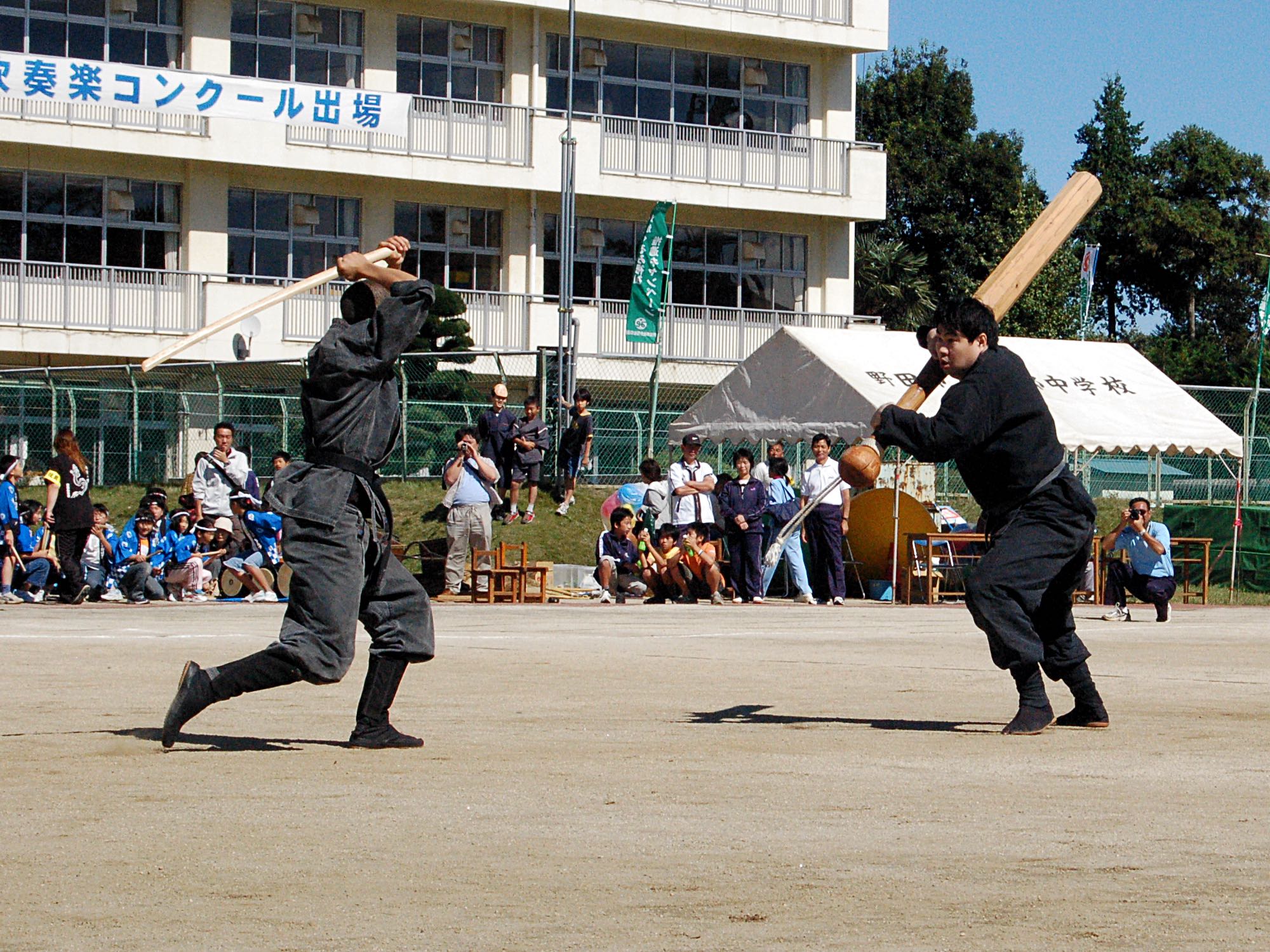Month: February 2014
-
Kihon Happo
I Tetsu följer vi alltid det tema som Hatsumi-sensei bestämmer i japan och jag tycker det är viktigt att göra det. I år är temat, som bekant, Kihon Happo och Shinden Fudo ryu iaijutsu. Anledningen till att det är Kihon Happo är för mig rätt självklart. Låt mig berätta en historia från ett av mina…
-
Togakure Ryû Ninpo Taijutsu
Togakure Ryû Ninpo Taijutsu av Masaaki Hatsumi Togakure Ryu Ninpo Taijutsu, även kallad “Taijutsu-boken” blir det denna gång. Den kan ni endast köpa begagnad eller som fotostatkopia. Precis som jag har många blandat ihop den med “Ten Chi Jin Ryaku No Maki”. Nu har jag inte TCJRNM, men mycket är samma i dom två, vad…
-
Things that make you go ‘Hmmmm’…
Då är jag här igen med en intressant text. Den här är också från Facebook. Denna gång är författaren Mark Lithgow. Mark är känd inom Bujinkan och är den person som bott längst i Noda. Mark är inte så dokumenterad på nätet, så det blir inte så många länkar. Fråga gärna mig eller Mats i…
-
Att fortsätta träna
Bland det roligaste som finns som instruktör är när det kommer elever som fortsätter träna, vad som än händer. Och bland det tråkigaste är när duktiga elever slutar träna. Och slutar, det gör de vid tre olika tillfällen (för det mesta); 1. efter nio kyu. Jag har aldrig förstått meningen med att träna hårt tills…
-
Kukishin Ryû Bujutsu
Kukishin Ryû Bujutsu av Kiba Kôshirô Här är en bok som är skriven av en elev till Takamatsu Sensei. Boken innhåller tekniker från, just det, Kukishin Ryû, närmare bestämt bojutsu, hanbôjutsu och tachiai. Det börjas med rokushakubô, kamae, kihon gata och kuji no kata. Sedan fortsätter boken med hanbô, med tekniker som tsuke iri och…
-
Keiko no Kokoro
Jag hittade en text på Facebook. Den var så pass intressant att jag postar den här. Texten är skriven av Duncan Stewart från Tasmanien. Länk till texten på Fejjan: Keiko No Kokoro Vill ni veta mer om vem Duncan är, surfa nätet eller fråga mig. Här är några länkar: Duncans dojo På Facebook Duncans blog På…
-
Essence Of Ninjutsu
Essence of ninjutsu av Masaaki Hatsumi I den här boken berättar Hatsumi Sensei olika historier och händelser som ofta har en filosofisk sedelärande poäng. Berättelserna handlar ofta om Takamatsu och när han var ung. Man får även ta del av vissa tekniker i form av svart vita bilder och en del ninjamagi och trix. En…
-
Bujinkan i vardagen…
[ett inlägg från 5 maj 2011] I över 13 år har Bujinkan varit en stor del av mitt liv. Min första kontakt var när jag var fjorton år och den sötaste kille i skolan skröt om hur bra han var på kamp-sport. Han hade grönt bälte och 9 kyu. Bländad som jag var över denna…
-
Ninjutsu – History And Tradition
Ninjutsu – History and tradition av Masaaki Hatsumi Boken ger en bra inblick i vad ninjutsu är och var. Inga ingående beskrivningar av tekniker, utan mer en översikt som är givande både för utövare och utomstående. Den innehåller även en hel del intressanta bilder på Hatsumi sensei i action samt massor på traditionella vapen. Den…
-
Varför började du träna?
Jag fortsätter plocka över inlägg från vår gamla blog. Detta inlägg är från 2011-08-23. Jag tänkte bara skriva ett inlägg om hur mitt intresse vaknade för kamp eller rättare sagt budô. Eller åtminstone vad jag tror det var. När jag började skolan, till mitt förtret för man skulle bara 7 år och jag var bara…

